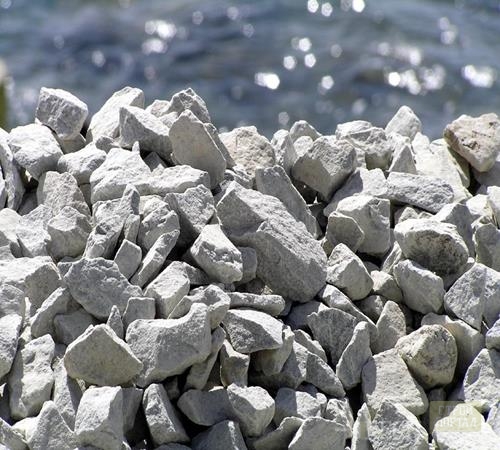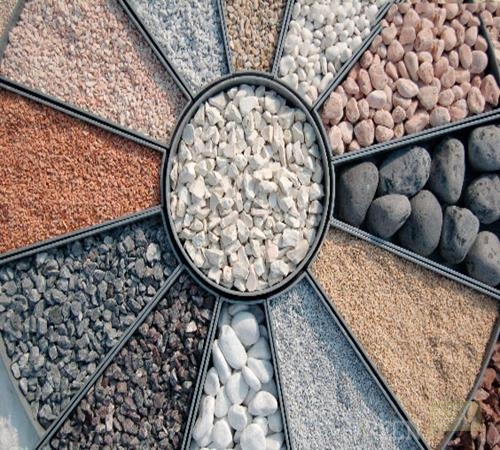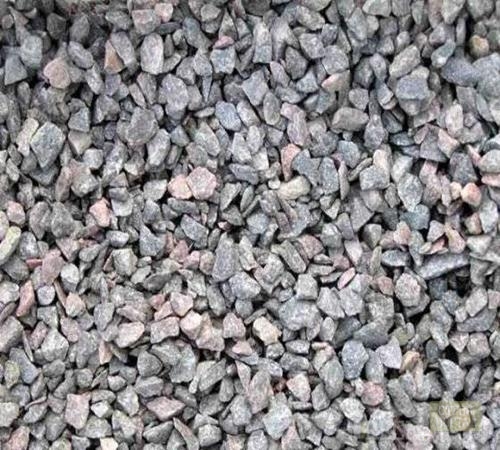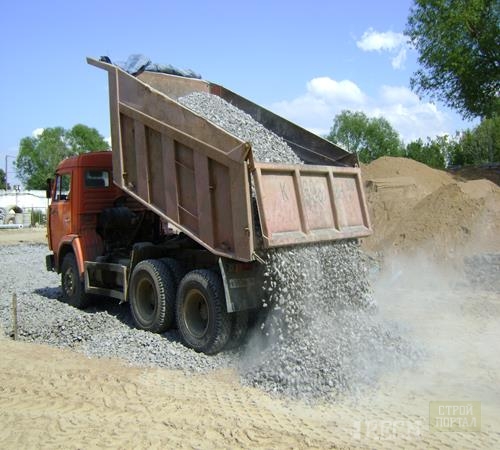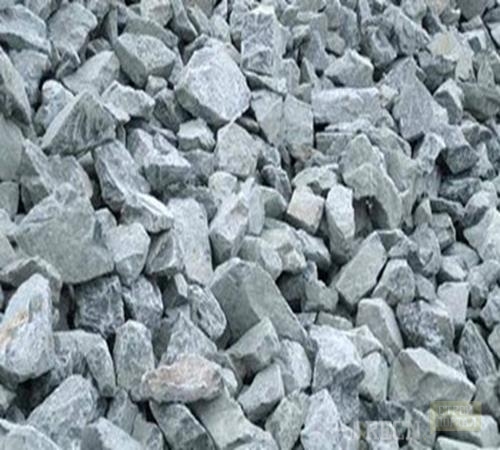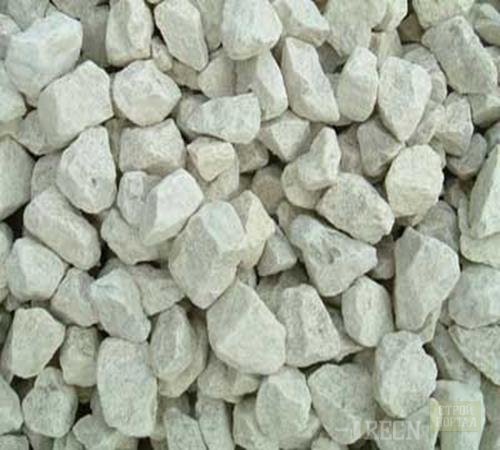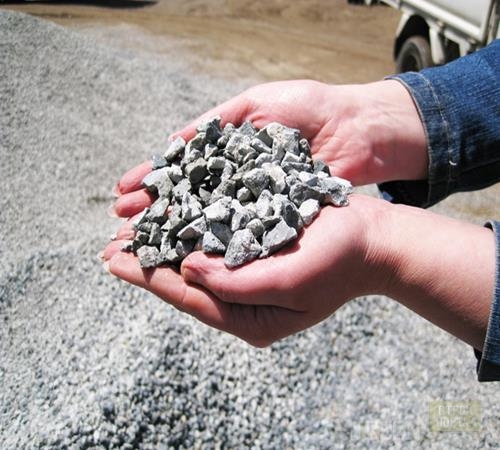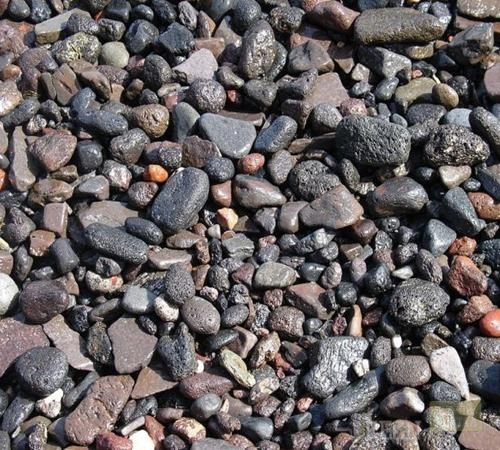
How to choose rubble for drainage Building materials
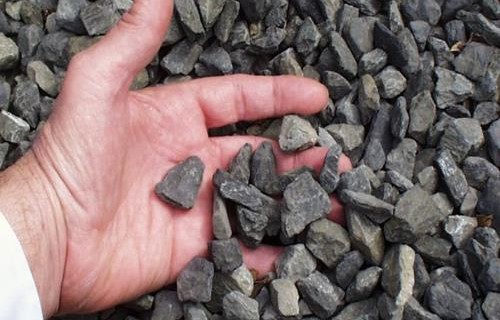
Despite the various reasons for the drainage device, the purpose of its one is to drain the territory, the removal of excessive waters. Crushed stone is fundamental in the design of any drainage. Therefore, it is important to carefully treat the choice of material and choose the type that will be optimally approaching a specific drainage system.
Content
The role of rubble in the drainage system
In the drainage system, crushed stone plays the role of a filter that protects the pipe from clogging and damage, and at the same time, it uses well water. Drainage pipes are produced with water holes, which as a result of the difference in the internal pressure in the pipe and the outer pressure falls into the drainage system. Water should be cleaned from the sludge and large particles, their falling into the drainage system will damage the holes in the pipes. Pillow of sand and rubble is a reliable base for a network of drainage communications. In the closed drainage system, pipes (drains) from all sides are covered with rubble. In the open system, rubble for drainage is stacked on the bottom of the trench, the walls of the trench are also strengthened with rubble.
The importance of correctly selected at the initial stage of the filtering layer is important, because a qualitatively performed drainage system will reliably protect the plot from flooding and will work without failures. That is why you need to carefully treat the selection of the species and fractions of rubble.
Types of rubble
The extractive industry provides us with three types of rubble.
- Crushed stone granite - the most suitable material for drainage material.
- Gravel crushed stone - has lower strength characteristics than granite.
- Crushed stone lime or dolomite - little suitable for drainage systems and is used more in construction.
To decide which crushed stone is needed for drainage, consider various characteristics and properties of three types of rubble.
Physico-mechanical characteristics include:
- The homogeneity of the material depending on the grain composition. Uniform material has greater density.
- Frost resistance - how much material is resistant to freezing and defrosting.
- Bulk density of rubble mass.
- Water absorption.
- The content of impurities, dust and other small rocks.
- The shape of fractions - with sharp corners or rounded.
- Radioactivity - absorbed radiation, the degree of which depends on the area where rubble mined, so it has a natural radioactive background.
Characteristic rubble by type
Granite crushed stone is mined from solid rocks by an explosion and subsequent crushing and is made by sieving rock in careers.
Properties of granite rubble:
- the highest degree of frost resistance (temperatures, harmful to granite, is not found in nature, serves almost forever)
- strength (1 cm substrate without visible mechanical damage withstands weight up to 100 tons),
- the density of its mass in a bulk state is 1.4 tons per cubic meter. m (which is much higher than other types of rubble).
The advantages of granite rubble:
- The hardness and strength of the granite rubble increase its use, so the drainage system with its use will be operated longer.
- When using it in open drainage systems, frost resistance plays a major role, which allows partially to protect the system from supercooling.
- The density of the mass of rubble in bulk state is high, therefore, the walls of the trenches of surface systems for drainage will be reliably strengthened due to the dense adhesion of individual fragments.
- Granite rubble is mined from solid fragmentation, it is a homogeneous material, so it practically does not contain small clay and dust particles, fragments of other breeds and inclusions, which characterizes it as a reliable filtering material, because the water does not "wash it."
- As a result of the production process of the granite rubble by the method of crushing, the material has an uneven angular shape, which ensures the best grip of fragments, and it is more reliable protecting the drainage pipes from damage and clogging.
- The degree of radioactivity of the produced granite rubble corresponds to the normative 1 class and is safe for humans.
- Its price, of course, is much higher, but it pays off by the other characteristics and the durability of the structures for which it is used. If you make a closed drainage system throughout the site, the use of granite rubble will bring substantial economic benefits in reducing cleaning and repairing costs.
Nevertheless, the material cannot be called universal. The same high strength causes the need to wrap the pipes for drainage into a protective softening contour, otherwise under pressure, granite easily sells the surface of the pipe and will violate the correct functioning of the system. In addition, granite is not always mined on safe specks. Often there are cases when its radiation background significantly exceeds the permissible values. Therefore, it is desirable to check the batch of rubble dosimeter.
In contrast to granite rubble, gravel produce from sedimentary rocks by crushing. Sedimentary breeds have inorganic origin, loose in their structure. The breed itself consists of rounded pebbles, but gravel chipped crushed stone has the same shape as granite.
Properties of gravel rubble:
- the high degree of frost resistance (gravel is twice twice as a granite on this indicator, although the stone itself is not afraid of cold weather, the impurities begin to respond to a temperature of less -20 degrees Celsius. This leads to the appearance of cracks and the pillars of the substrate, it turns into dust),
- the strength is high enough (layer with a thickness of 1 cm withstands up to 80 tons),
- contains 0.6% of clay particles,
- contains 1.5% of weak rocks.
In comparison with granite rubble, gravel is inferior to him in strength, but wins at a price. As a result of its origin, gravel crushed stone is less radioactive, so environmentally friendly.
Although the chipped gravel crushed stone is similar to granite, faces and angles have a pointed shape and will delay various mechanical particles, but the structure is more loose. Gravel crushed stone in its composition has loose rocks, clay particles that will "wash out". The consequence of this will be gradual clogging of pipe holes and reduce their bandwidth. So periodically the drainage system will have to be cleaned. Well, if it only decesses the site, and the supporting structures of the foundations will not affect its clogging, so it is better to use a gravel crushed stone in the drainage system of the site, and not constructive.
However, this drawback is very easy to compensate. It is enough to make a substrate from sand with a thickness of at least 10 cm. Then the moisture will be held very progressively and the negative effect of water will be minimized.
Dolomite crushed stone is also mined as the granite - from mountain and rock rocks. They have a similar structure. Different crushed only an admixture of calcite. The impurities that contain rock is oxide of iron, quartz, give the dolomite crushed various pastel shades from the brown to grayish-white. Therefore, he is so attractive.
Properties of gravel rubble:
- the low degree of frost resistance (material, due to the presence of a large number of impurities, begins to deteriorate at the temperature of -10 degrees Celsius),
- the strength of the dolomite rocks is different and ranges from 50 tons per 1 cm substrate, up to 150 tons (such a differential depends on the properties and character of impurities, the metal increases the strength, as a rule, paints dolomite in brown or reddish color),
- contains 0.25% of clay particles,
- contains 5% of weak rocks.
Dolomite rubble is the most environmentally friendly compared to others, has no radioactivity. It has reasonable price and high strength.
Lack of material, in fact, only one. The presence of impurities of metals. This property is manifested as minus, only in acidic soils. Hydrogen ions react with metals oxidizing them and forming salts. As a result, the strength of dolomite drops sharply and crushed stone begins to crumble under its own weight.
Fractions rubble
The dimensions of the fractions are a common parameter for crushes, in size, they constitute five main groups:
- up to 5 mm is very small fractions containing up to 25% of dust particles - the granite screening, which is the final result of the waste that was formed in granite careers. Its main application - for swelling tracks and sites (it is cheap, but it does not fit for drainage);
- 5-20 mm are small fractions, they practically do not contain dust particles. These fractions are very high demand due to the fact that they are used for the production of building materials from concrete, as well as on the foundation work, for bridge structures, road surfaces, so the price is very high on them (if the size of the drainage system is not too big, it is worth consider this option);
- 20-40 mm - the average fraction is the main fraction for drainage work. In addition, it is used in the construction industry for the production of structures from reinforced concrete, road construction, including railways. Used for foundation, dumbfounders, in the production of high-quality concrete;
- 40-90 mm - large fractions - used on drainage work, in the construction industry for the production of reinforced concrete, for road construction, like decorative material;
- 100-300 mm - the largest fraction, rare and expensive, so used as a decorative element and for finishing in landscape construction (for drainage is not suitable, both in terms of price and in quality).
From this quite a large list of sizes and applications, choose the rubble fraction for drainage.
Where to buy crushed stone
Interesting offers are made by the producers of rubble. The Shepet Granite Career offers the highest quality and certified products from the Vnukovo site (Moscow), as well as in Tula at a price of 1180 rubles / TN, providing a commodity loan and organizing delivery directly from the object. For large amounts of drainage, such proposals are very tempting.
No less interesting offer from Voronezh. SELLAT LLC offers crushed stone from 600 rubles / tons. A significant drawback is that from career delivery is carried out independently.
The company ATLAN LLC from Izhevsk carries out the sale of high-quality rubble of 1150 rubles / tons. Delivery is provided.
Regarding all these large manufacturers, it is worth noting that the price refers to wholesale purchases, in which transportation costs are not significant. If you purchase crushed stone at a retail price, its cost will be significantly higher.




